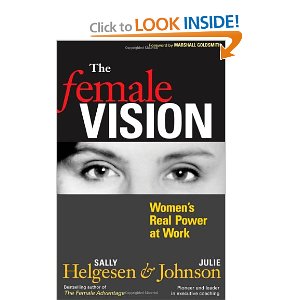
Note from Dan: Sally Helgesen is one of those thinkers who is both original and yet sensible. She breaks new ground and yet she makes perfect sense. When Sally and I discussed some ideas that are fascinating to her, I latched on to the one below, and encouraged her to write about this. I hope you enjoy it as well. We’d both love to read your comments about Sally’s thoughts….
When companies improve their capacity to attract, retain, engage and develop women, they benefit in many ways. They broaden their talent pool, keep the cost of turnover down, improve the quality and versatility of internal teams, provide more points of value to clients, and bring fresh perspectives to leadership level decisions. For all these reasons, programs and policies that actively help women develop their abilities and build their networks are essential for organizations seeking to position themselves well in the years ahead.
But there’s another big advantage to these programs, one that’s rarely acknowledged. For by learning how to become more attractive places for women, companies also prepare themselves to better manage and develop the next generation of talent, male and female.
Why? Basically because younger men and women share more similar values and goals around work than men and women did in the past. My own research as well as myriad studies on the younger workforce show that both men and women seek work/life integration, judge satisfaction based on daily experience and other intrinsic factors, seek to have social needs met at work, are skeptical of hierarchy, top-down leadership and established expertise, don’t necessarily assume that salary and position are a worthwhile tradeoff for on-going extreme demands, and want work
What’s behind the shift? I believe the big reason is that men and women’s lives are more similar than in the past. Think about it: this is the first time in human history that men and women have used the same primary tools in their work; from the spear through the typewriter, men and women have always been known by their distinctive tools. Using the same tools gives men and women a common language of work, and requires us to exercise and hone similar skills. In addition, the sheer intensity of our 24/7 workplace culture has eroded traditional barriers that kept men and women in separate realms.that serves some higher purpose. For the last 20 years, these characteristics have been more typical of women in the workforce. That’s changing, and organizations and leaders need to be prepared.
This change, this shift, is monumental and it’s here to stay. The upshot? Smart leaders will welcome the chance to create environments in which women’s best talents can thrive, knowing this will help them attract and engage the best of both genders in the years ahead, to, as Dan would say:
Lead with your best self,
Sally Helgesen


Interesting article., However there is an interesting question that I’ve yet to see seriously addressed. If women are such a wonderful source of untapped talent why apparently is the market so slow to realize it? We live in a world where information technology allows smart people to arbitrage fractions of a cent to make a profit. Yet this same efficient market is seemingly so stubbornly sexist that it prefers to hire a man for a dollar rather than an equally qualified woman for seventy cents. Based on my experience this doesn’t make sense. There must be “something else going on” and very few people seem willing to even consider what this something else might be. Thanks for the article. I enjoyed it.